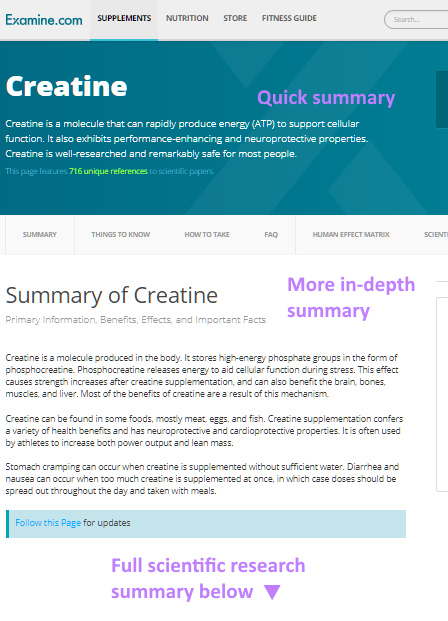Creating content is not easy. At least, creating good content ain’t easy (which is why I’m a big fan of consistent output).
But the reality is the Internet is drowning in content. Text. Pictures. Infographics. Videos. A blend of them. It’s easy to feel overwhelmed trying to generate content for all of them.
I’ve always been a big advocate of spending a small amount of your overall time building content; the majority should be spent on maximizing its exposure.
Case in point – Examine.com. Almost seven years old, and we have roughly ~425 supplements. That’s 60 per year, or just over one a week!
Over the past year, those pages have gotten roughly 20,000,000 visitors. That’s almost 50,000 visitors per page.
Spend less (of your overall) time on creating content, and more time promoting it
People consume content in different ways
Different people consume media in different ways, and different social media networks have different purposes.
For example, I love to read. I rarely watch videos. I don’t have Instagram. I have friends, on the other hand, who hate reading and love watching videos; Instagram is a portal to many worlds.
So a wonderfully written article would result in me tweeting about it (e.g. this fantastic article on Google Map as a moat), but it would never reach them. And vice versa – they’ll send me (or well, used to) links to videos, and I’m like “OK” and then never watch them.
Be cognizant that your audience consumes content in different ways
Create content from existing content
The solution is simple: take your content, and re-purpose it.
Let’s use that Google Maps as a moat article as an example.
At almost 5000 words, it’s a big article. You could subsequently chop that article up and:
- Re-post images on Instagram
- Post images and quotes on Facebook and Twitter
- Generate an infographic
- Create a video talking and showing how Google built out the AOIs
- Take the animated gifs and post them on Twitter and Instagram.
- Write shorter articles for other publications
Yes, creating an infographic or a video or a shorter article would take work, but I would wager it would take less than 10% of the work it took Justin to accumulate the data and write out the post in the first place.
Plus, the article has already proven to be a winner – as I write this, BuzzSumo has it at 20,000 shares.
The opportunity cost of taking what you’ve already done and repurposing it such that it’s accessible to a broader audience versus creating new content makes this a slam dunk.
Spend more time repurposing your content so it can reach more people.
Accessibility
I mentioned the word accessible above. A 5000-word article is not accessible. It’s a daunting article, and I had it open for a few days before I read it.
You may roll your eyes at me, but I’m being pragmatic here.
We have online and offline distractions constantly tugging at our attention and ability to focus. An infographic or a quote or shorter write-up would be the perfect hook to pique my curiosity, thus leading me down the rabbit hole that is the entirety of the article.
At Examine.com we always have a quick summary at the top, then a more in-depth summary, and then the extensive amount of research that backs it all up.

In a way, you’re hooking your visitors like fish. Lure them in with something that gets their attention, and they’ll be more likely to keep biting for more.
You are not that amazing
Remember: you are not here to impress your peers.
What you are here is to write for your audience.
Thus, to be completely honest, your content in itself is unlikely to be genuinely unique.
It’s your message that is unique.
So spend more time spreading and repurposing your message instead of continually trying to come up with more stuff.
It’s a far more effective use of your time.
Spend less time making new content. Spend more time on promoting it and repurposing it across multiple mediums.

Leave a Reply